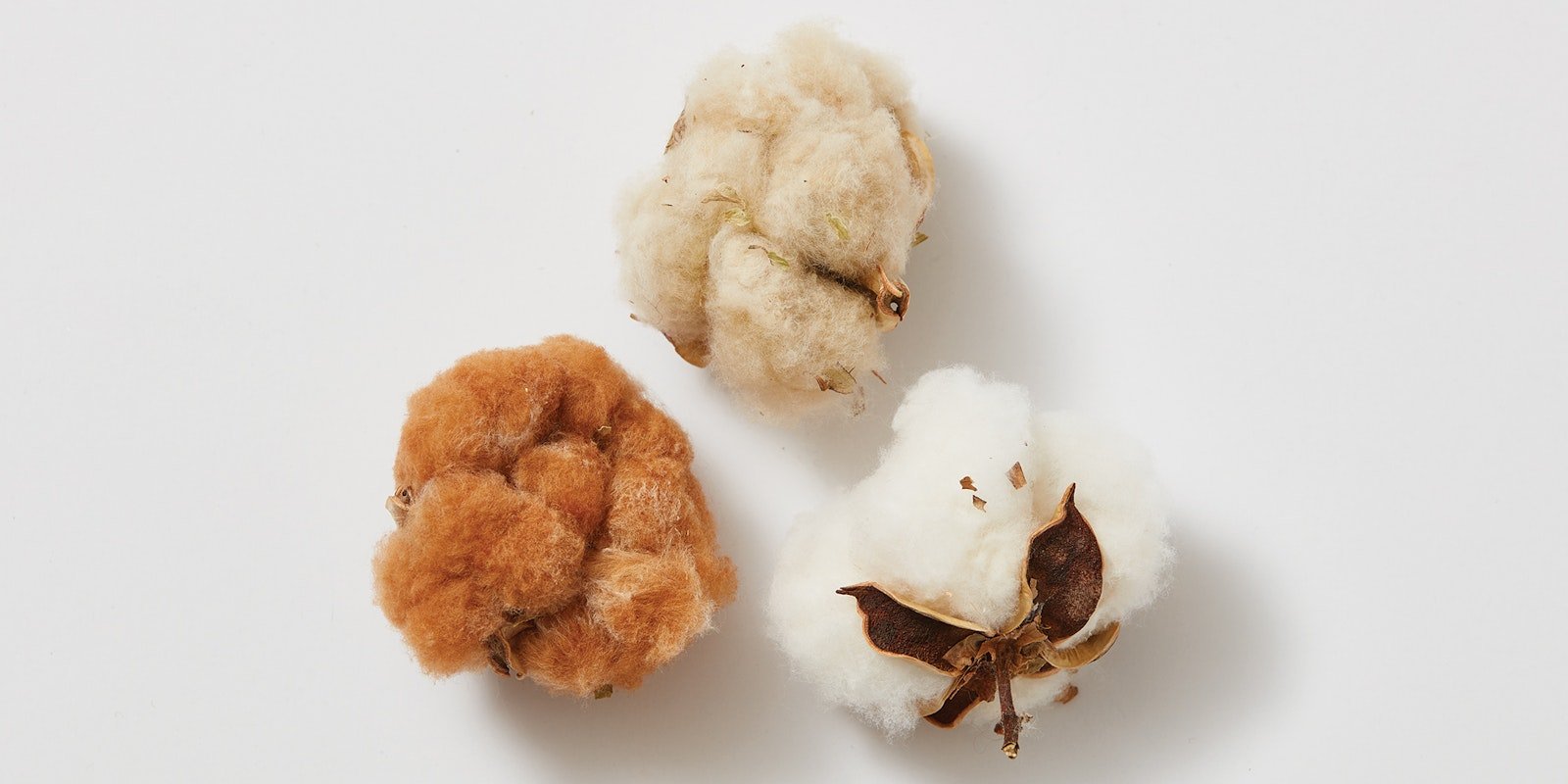Naturally colored cotton ought to come with a notice: Colors might not remain as they appear. As Stephenie Gaustad reveals in Spin Off’s Summer 2018 issue, factors such as time or soaking the fibers in an alkaline solution can alter cotton’s original color. Here’s Stephenie to explain how she stumbled upon this fact and the results of her experiments.
Naturally colored cotton grows in a variety of red-browns, beiges, yellows, manilas, dark warm chocolate browns, and greens. A fair number of these natural colors are lightfast and washfast, and many change dramatically after the yarn is scoured.
I first encountered natural-colored cottons when the United States Department of Agriculture’s Shafter Cotton Research Station was growing some 20 different varieties of colored cottons in the 1970s. They were happy to hand over the fibers to someone who could use them; fresh seed was their prime interest. The cotton geneticist there said that the browns and beiges didn’t change much over time but to beware of the green. He had a sample that he had tacked to his bulletin board, and in just a few years, it had gone from light green to a pale cream. “That stuff is going to fade,” he warned me.
 The original study in color modification comprised fourteen samples and six solutions.
The original study in color modification comprised fourteen samples and six solutions.
That comment proved to be like waving a red cape at a bull. In my own studio, my faded cream-colored “green” cotton sliver turned deep khaki green when I boiled the yarn in washing soda and detergent to scour it and set the twist. I’d also seen a boiling scour turn light camel-colored cotton yarn to dark chocolate brown. There was clearly more to this story.
I performed a series of experiments and explored how presoaking cotton yarn in a variety of alkaline household products can also produce subtle or striking changes in color. I recently took a second look at notes and examples from those years past.
Small samples of brown and green cotton were soaked immediately after spinning. Each dry skein was immersed in a water/alkali solution for 48 hours. The skeins were laid out to dry and mounted for display.
Changes in the brown cotton samples were not particularly dramatic, but the green cotton changed with each alkaline soak. Ammonia, washing soda, and potash produced the greatest shift, from pale mint to dark khaki.
To learn more about Stephenie’s experiments with cotton you can read the full article in Summer 2018 issue of Spin Off.
Also, remember that if you are an active subscriber to Spin Off magazine, you have unlimited access to previous issues, including Summer 2018. See our help center for the step-by-step process on how to access them.
For decades, Stephenie Gaustad has taught fiber arts, spun, woven, and dyed a ton of fiber, and she was the longtime apprentice to textile toolmaker Alden Amos. Her many articles have appeared in Handwoven, Spin Off, Ply, and Shuttle, Spindle & Dyepot. She is the author and illustrator of The Practical Spinner’s Guide: Cotton, Flax, Hemp and illustrator of The Alden Amos Big Book of Handspinning.
Originally published September 13, 2018; updated August 5, 2022.

